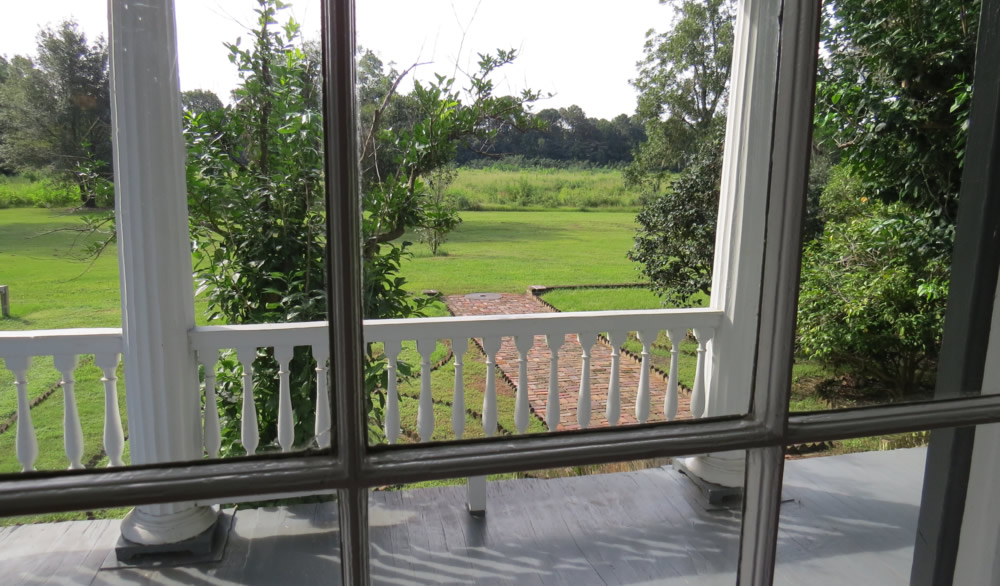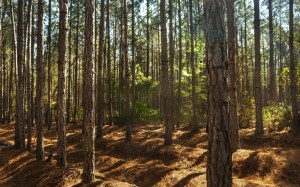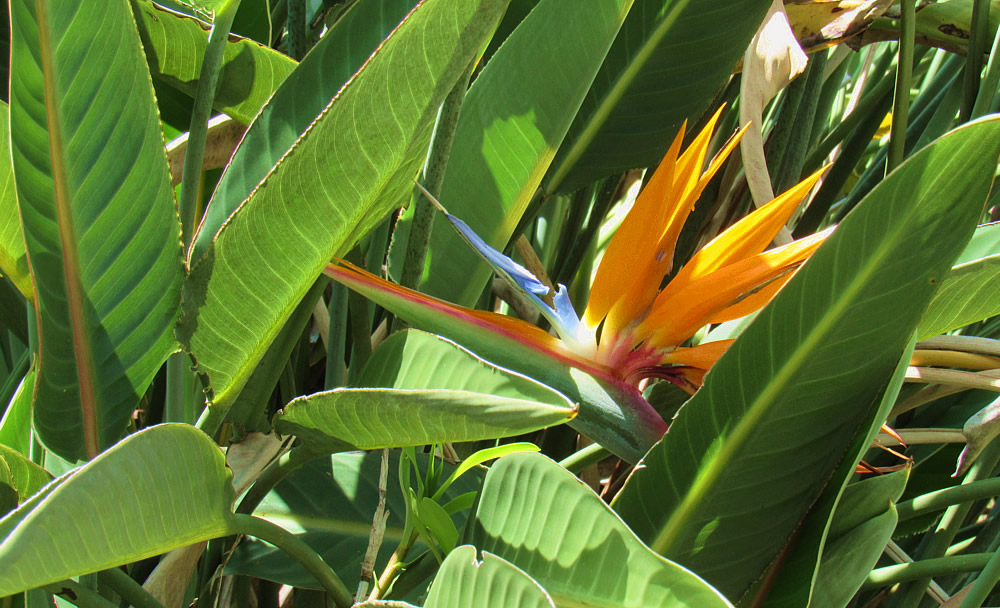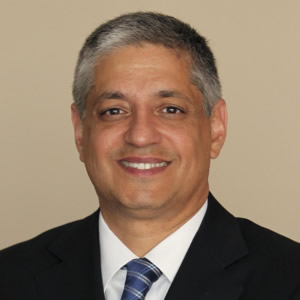This beautiful bird of paradise flower is one of thousands of plants at the Soroa Orchid Botanical Garden in the Pinar del Rio region west of Havana, Cuba. The mountainous, tropical garden reportedly is home to more than 25,000 orchid species from across the world — and would be the kind place that fictional detective Nero Wolfe surely would leave his New York brownstone to visit. Photo by Andy Brack.
IN THIS ISSUEPHOTO: Bird of paradise
FOCUS, Leon Stavrinakis: In race to move Charleston forward, keep it together
BRACK: More energy options are a good deal for consumers
IN THE SPOTLIGHT: Titan Termite & Pest Control
PALMETTO POEM: Music of doves ascending
GOOD NEWS: Aquarium lectures, no-drilling rally
FEEDBACK: Send us your letters
CALENDAR, Sept. 14+: Green Fair, author visit, more
REVIEW: Inside the O’Briens
MYSTERY: Through the looking glass
S.C. ENCYCLOPEDIA: Civilian Conservation Corps
TODAY’S FOCUS
In race to move Charleston forward, keep it together
By Leon Stavrinakis, candidate for mayor of Charleston
SEPT. 14, 2015 | Forty years ago, Joe Riley left the legislature to become mayor of Charleston. We have all been witness to the kind of difference proven leadership can make as we watched him lead Charleston’s transformation into a diverse, economic powerhouse led by thriving hospitality, booming manufacturing, growing knowledge based, high-tech industries and the most unique quality of life anywhere.
As Mayor Riley steps away from the stage, it’s time to ask ourselves what we need for our city to continue to be the special place we all love.
To me, the answer is clear: We need a hands-on mayor, a proven leader focused on delivering the best city services and producing results that improve people’s lives through less traffic, safe streets and excellent neighborhoods.
This week I released a comprehensive plan for Charleston. It focuses on six areas that define Charlestonians’ relationship with their city: traffic, crime, schools, government, the economy, and quality neighborhoods.
There was a time when rush-hour traffic was something that just happened in other cities. No longer. As Charleston has grown, frustrating commutes have grown with us. Longer commute times mean less time with family and friends. We must reduce logjams and commute times at known trouble spots like Savannah Highway, Highway 61, Folly Road, Glenn McConnell Parkway, Maybank Highway, Main Road and more.
First and foremost, we must complete I-526. Doing so will have a positive impact on many of our city’s worst traffic areas. I have long been one of the most vocal supporters of this project. As Chairman of County Council, I secured the funding for 526 and as mayor I will work every day to see its completion expedited.
I’ll invest in adaptive signal control technology for better timing of traffic lights on our streets. Using technology will not only cut commute times but it is also cost effective.
And I’ll explore a bus rapid transit system that uses dedicated lanes solely for buses to shuttle passengers quickly through the city to alleviate traffic.
 As a former prosecutor, I know the importance of keeping our city safe from crime. I sponsored the body cameras bill this year and as mayor I will oversee its implementation. I’ll ensure that our police and fire departments have access to the resources and training necessary to do their jobs.
As a former prosecutor, I know the importance of keeping our city safe from crime. I sponsored the body cameras bill this year and as mayor I will oversee its implementation. I’ll ensure that our police and fire departments have access to the resources and training necessary to do their jobs.
As a small businessman, I understand the hard work it takes to create jobs. As mayor, I will make sure city government spends taxpayer money wisely and frugally to help small businesses grow, while maintaining critical investments in roads and neighborhoods. I have balanced seventeen budgets without raising taxes. That strong fiscal record and my proven record on jobs, schools and roads are why the Charleston Metro Chamber of Commerce endorsed my campaign for mayor last month.
As mayor, I’ll expand the success of Charleston’s Digital Corridor, build on tourism while protecting our neighborhoods, and cut bureaucratic red tape at city hall.
As a product of Charleston public schools with three children currently in public schools, I know how vital a strong public school system is to the success of Charleston’s growing economy. As mayor I’ll be an outspoken advocate for our schools. I’ll fight for universal pre-K and more funding from Columbia. I’ll work alongside our city’s high schools to make sure students have the necessary training to work summer jobs and are ready to meet the employment needs of our local businesses. I’ll partner with our local colleges to make sure the degree programs match up with local jobs so graduates can stay right here in Charleston.
Plans are easy to make but hard to make happen. The difference in this year’s mayor’s race is I have a proven record of balancing budgets, cutting taxes, managing growth, and successfully funding roads, transit and schools.
My parents taught me the value of hard work, service and respecting everybody. I learned at an early age that in order to get things done you need to roll up your sleeves and take a hands-on approach to any challenge. I’ll continue that approach at city hall to keep Charleston moving forward, together.
- Read more about my plan for Charleston at www.LeonForMayor.com
Leon Stavrinakis, a state representative since 2007, is a Charleston lawyer who lives in West Ashley. Learn more about his campaign here.
EDITOR’S NOTE: Charleston Currents has offered this space to each of the Charleston mayoral candidates to share their views with readers. Click the “2015 Election” tab at top to see pieces by William Dudley Gregorie, Maurice Washington and Toby Smith. Next week: Ginny Deerin, followed Sept. 28 by John Tecklenburg.
COMMENTARYMore energy options are a good deal for consumers
By Andy Brack, editor and publisher
SEPT. 14, 2015 | An energy revolution is underway in South Carolina and you may not even realize it. Just look at recent news headlines:
![]() Wind energy. Federal regulators have identified almost 1,200 nautical square miles of the South Carolina coast that have the potential to produce wind energy. Within a decade, depending on the regulatory process, sea-based turbines could be generating power much like offshore wind fields in the North Sea.
Wind energy. Federal regulators have identified almost 1,200 nautical square miles of the South Carolina coast that have the potential to produce wind energy. Within a decade, depending on the regulatory process, sea-based turbines could be generating power much like offshore wind fields in the North Sea.
Consumer solar. The state office that oversees power-generating issues last week told Statehouse Report it’s ready to guide the expansion of solar power in the state as required by a law passed last year. It won’t be long before churches and consumers can easily lease roof space to generate power through solar panels — and to sell some of it back to utilities when it isn’t used on site.
More nuclear. Despite consumer grumbling about rate hikes forced by cost overruns, South Carolina’s utilities are investing $6.8 billion to build two new nuclear reactors to provide cleaner energy. The reactors, originally set to start next year but pushed back to 2020, will add capacity to South Carolina’s power generation and help offset closures of dirtier, coal-burning plants that have been mothballed.
Efficiencies. Despite gas being at record low prices now, energy-efficient hybrid cars and natural-gas-powered buses continue to gain momentum. Consumers also are embracing energy efficiencies, such as moving away from incandescent bulbs to fluorescent, or more recently, LED bulbs.
 “South Carolina is turning a corner on clean energy,” said Hamilton Davis, energy program director at the S.C. Coastal Conservation League in Charleston. “We have already reduced carbon emissions dramatically over the past decade due to coal plant retirements and energy efficiency.
“South Carolina is turning a corner on clean energy,” said Hamilton Davis, energy program director at the S.C. Coastal Conservation League in Charleston. “We have already reduced carbon emissions dramatically over the past decade due to coal plant retirements and energy efficiency.
“Now we are anticipating an abundance of new solar resources to come online, as well as more aggressive energy efficiency investments that will help consumers lower their electric bills.”
For Mike Couick, president and CEO of the Electric Cooperatives of South Carolina, what’s happening with energy across the state has been more of a continuing evolution than a revolution.
“We have historically witnessed energy evolutions occurring within the context of the latest and greatest — but certainly not equivalent — fuel choices: wood to peat, peat to coal, coal to kerosene, kerosene to other fossil fuel derivatives (gas, diesel and natural gas), fossil fuels to nuclear and, then, nuclear to renewables such as solar and wind,” he said. “These transitions most often have been driven by a combination of technology, economics and regulation.
But more change, he agrees, is coming — particularly for consumers in the next decade.
 “The evolution will be accelerated by an increased capacity of information technology and micro-applications which shift options to behind the meter, that is, on the customer side of the meter,” Couick said, adding that a revolution could occur with big advances in energy storage, two-way communication between a utility and consumer and market-based trading of electricity between consumers and utilities.
“The evolution will be accelerated by an increased capacity of information technology and micro-applications which shift options to behind the meter, that is, on the customer side of the meter,” Couick said, adding that a revolution could occur with big advances in energy storage, two-way communication between a utility and consumer and market-based trading of electricity between consumers and utilities.
“A utility’s survival will depend upon its shift from a command and control model to one supporting increased consumer product diversity. Those utilities that resist will fail.”
At Santee Cooper, the state’s largest power generator, boosting alternative energy sources and conservation have been strategic goals for nearly a decade. In 2001, the utility opened its first renewable Green Power station and now includes the state’s largest solar farm. Six years later, Santee Cooper’s board set a policy to meet 40 percent of consumer energy needs by 2020 with non-greenhouse gas-emitting resources, renewable energy, conservation and energy efficiency.
“That 2007 goal has really mapped our activity since, including constructing two new emissions-free nuclear power units; increasing our renewable energy generation by 400 percent; and launching an aggressive energy efficiency program that helps customers save more energy every year,” said company spokesman Mollie Gore. The utility, for example, recently generated 80 percent of its power by coal. By 2021, that amount is expected to drop to a third, she said.
Bottom line: Consumers will have lots of options for transforming their mix of energy sources — from rooftop and community solar to solar leasing, home batteries, more energy efficiency and nimbler utilities.
Andy Brack is editor and publisher of Charleston Currents and Statehouse Report. You can reach him at: editor@charlestoncurrents.com
IN THE SPOTLIGHTTitan Termite & Pest Control
 Titan Termite & Pest Control, headquartered in Charleston, is a full service residential, commercial and industrial pest control company serving South Carolina. It is a third-generation, family-owned company known for outstanding customer service. Each associate is dedicated to the customer and exhibits integrity and respect. Titan’s pest professionals can assist your commercial or residential location with general pest control, termite inspections, termite control, flea control, bed bug extermination, ant control and more. Titan Termite and Pest Control continues to set high standards so that its customers receive the best possible service. Titan’s technicians are knowledgeable of the latest in pest control techniques, which enables the company to customize effective treatment plans for every situation.
Titan Termite & Pest Control, headquartered in Charleston, is a full service residential, commercial and industrial pest control company serving South Carolina. It is a third-generation, family-owned company known for outstanding customer service. Each associate is dedicated to the customer and exhibits integrity and respect. Titan’s pest professionals can assist your commercial or residential location with general pest control, termite inspections, termite control, flea control, bed bug extermination, ant control and more. Titan Termite and Pest Control continues to set high standards so that its customers receive the best possible service. Titan’s technicians are knowledgeable of the latest in pest control techniques, which enables the company to customize effective treatment plans for every situation.
- Free estimate: 888-794-5603.
- Contact Titan online.
Music of doves ascending
EDITOR’S NOTE: The author composed this poem, a pantoum, for the Unity concert in August following the June massacre of nine people at Emanuel AME Church in Charleston.
By Marjory Wentworth, poet laureate of South Carolina
![]() Yellow crime tape tied to the rod iron fence
Yellow crime tape tied to the rod iron fence
weaves through bouquets of flowers
and wreaths made of white ribbons,
like rivers of bright pain flowing through the hours.
Weaving through bouquets of flowers,
lines of strangers bearing offerings
like rivers of bright pain flowing through the hours.
One week later; the funeral bells ring;
lines of strangers still bring offerings.
Nine doves tossed toward the sun.
One week later; the funeral bells ring,
while churches in small towns are burning.
Nine doves tossed toward the sun.
Because there are no words to sing,
while churches in small towns are burning,
a blur of white wings, ascends like music
Marjory Wentworth, a Mount Pleasant writer whose poems have appeared in numerous books, is poet laureate of South Carolina. You can find more of her work at: http://www.marjorywentworth.net/
GOOD NEWSAquarium’s Holland lectures to focus on oceans, wildlife and Lowcountry
Four lectures offered by the Holland Lifelong Learning initiative at the S.C. Aquarium between now and February will focus on issues that directly impact the oceans and Lowcountry. Lectures will include talks on sharks, the saltmarsh, seafood, and why zoos and aquariums matter.
![]() “Thanks to the Holland family’s generosity and their appreciation of the Aquarium’s educational role, we are able to go deeper than ever in presenting the public with ways to think about the importance of water, wildlife and wild places,” said Kevin Mills, Aquarium president and CEO. “We look forward to engaging the community in stirring conversations about the changing world and our need to protect it.”
“Thanks to the Holland family’s generosity and their appreciation of the Aquarium’s educational role, we are able to go deeper than ever in presenting the public with ways to think about the importance of water, wildlife and wild places,” said Kevin Mills, Aquarium president and CEO. “We look forward to engaging the community in stirring conversations about the changing world and our need to protect it.”
- Sharks: Unlikely Allies, by Dr. John N. Forrest Jr., Director of Student Research, Yale University School of Medicine: 6:30 p.m., Sept. 17, S.C. Aquarium, Charleston. Forrest will discuss the medical advances for humans derived from shark biomedical research, presenting key discoveries linking our species like never before.
- Saltmarsh Science: What’s Brewing? by Bill Roumillat, fisheries biologist, College of Charleston: 6:30 p.m., Oct. 21, Holy City Brewing Tap Room, Charleston. Sip on delicious craft brews (including the award winning Pluff Mud Porter) while exploring the science of our local saltmarsh environments with Roumillat.
- Simplifying Seafood: What’s Cooking? by St. Jude Farms: 6:30 p.m., Nov. 11, Charleston Harbor Fish House, Mount Pleasant. From dockside to tableside, join Good Catch Program Manager Shelley Dearhart and fishery experts from St. Jude Farms to learn simple cooking tips and wow your family with delicious, sustainable meals.
- Why Do Zoos and Aquariums Matter? with Dr. Sylvia Earle, marine conservationist and National Geographic Society Explorer-in-residence; and Jeanne Gang, founder and principal of Studio Gang Architects and MacArthur Fellow: 6:30 p.m., Feb. 19, 2016, American Theater; dinner immediately following at the William Aiken House. Join this panel as they look at how aquariums, zoos, and other conservation institutions help to increase our capacities for concern, empathy, affection and care for the whole community of life. (Tickets will be sold for this event).
- More info on all events: http://www.scaquarium.org
Also in good news:
Stop offshore drilling rally: 6:30 p.m., Sept. 15, Yacht Club Room, Fish House Restaurant at Patriot’s Point, Mount Pleasant. U.S. Rep. Mark Sanford, S.C. Sen. Chip Campsen and Conservation League Energy Director Hamilton Davis will offer remarks at a “Not Worth The Risk” rally for the S.C. coast. Free food and Palmetto beer. RSVP here.
Natural history. The Charleston Museum has announced that it will renovate its Natural History Gallery to present a visually-compelling display of indigenous fossils and specimens that tell the Lowcountry’s story of natural history. The budget for the project is $887,000. The museum, which has half of the money in hand or committed, will unveil a fundraising campaign in October for the project, which is expected to be implemented in 2017. See what the updated facility will look like.
Read the report on the BAR. The final version of a report on what to do with the city’s Board of Architectural Review is now online. The City of Charleston and Historic Charleston Foundation hired architectural consultant Andres Duany and his firm, DPZ, to study and propose changes to the board. Its recommendations are to create two separate boards — one for larger projects and another for everything else. Duany will present the final report at a special meeting of the city’s planning commission at 5 p.m. Sept. 24 at the Sottile Theatre, 44 George Street, Charleston. Read the report here.
Lots of patents. The MUSC Foundation for Research Develop generated a record 69 patents during the 2015 fiscal year, more than double the amount from technologies developed at the Medical University of South Carolina the previous year. “To have so many technologies successfully go through such rigorous review, both domestically and abroad, speaks to the novelty of the technologies that are being created at MUSC,” said Jesse Goodwin, who is both deputy director for FRD and technology development officer for MUSC SCTR Institute. “The fact that the patents are being nationalized into so many countries speaks to the importance of the technologies.” More: frd.musc.edu
FEEDBACKSend us a letter
Rant. Rave. Tell us what you really think. If you have an opinion on something we’ve offered or on a subject related to the Lowcountry, please send your letters of 150 words or less to: editor@charlestoncurrents.com. Our feedback policy.
CALENDARSept. 14+: Green Fair, author visit, more
 Shaking a leg. It’s the end of the season for dancing at county parks with the summer’s last Moonlight Mixer at the Folly Beach Pier set for Sept. 18. A DJ will spin great old tunes to keep your feet moving. Click here for more.
Shaking a leg. It’s the end of the season for dancing at county parks with the summer’s last Moonlight Mixer at the Folly Beach Pier set for Sept. 18. A DJ will spin great old tunes to keep your feet moving. Click here for more.
Charleston Green Fair: Noon to 5 p.m., Sept. 20, James Island County Park. The 8th annual fair will offer lots of ways to learn about sustainability in day-to-day life. It will feature games, exhibits, contests, fitness opportunities, musical entertainment and much more. Admission is free with $1 gate admission. More.
Author visit: 5 p.m., Sept. 21, Blue Bicycle Books, 420 King St., Charleston. Author Lee Robinson will read from her debut novel, “Lawyer for the Dog,” which is set in Charleston where she worked for years as a lawyer and was the first woman president of the Charleston County Bar Association. She now lives in Texas. More: BlueBicycleBooks.com
Workplace diversity: 9 a.m. to 4 p.m., Sept. 25, School of Professional Studies, College of Charleston, 3800 Paramount Road, North Charleston. The College of Charleston, The Citadel, MUSC and Denny’s are partners in a new, day-long initiative to bring together community leaders to advance the management of diversity. Register: go.cofc.edu/advancingdiversity
Chase After a Cure golf tournament: Sept. 25, Patriots Point Links, Mount Pleasant. The fourth annual Drive Away Childhood Cancer Golf Tournament will benefit Chase After a Cure, a Summerville nonprofit that funds childhood cancer research and raises awareness. Since 2009, the group has raised almost $1 million for research and equipment at MUSC. $400 a foursome. More info: http://www.chaseafteracure.com
Oktoberfest 5K Run-Walk: 9 a.m., Sept. 26, Laurel Hill County Park, Mount Pleasant. The East Cooper Breakfast Rotary Club will host this annual benefit trail run that features a German band, brats and a Bavarian beer garden to welcome participants to the finish line. Costumes encouraged. Learn more and register here: http://oktoberfest5k.net/
(NEW) Ball Fall: 3 p.m. to 6 p.m., Sept. 27, Awendaw Green at Sewee Outpost, 4853 Highway 17 North, Awendaw. All ages are welcome for this annual event benefiting East Cooper Meals on Wheels. The spotlight event is a golf ball drop from a ladder firetruck. Whichever ball ends closes to a target could win $1,000 for its owner. Music, barbecue competition, corn hole, more. Free admission for adults with one $10 balls sponsorship. More info. www.ecmow.org/the-ball-fall
PURE Theatre show: Through Oct. 2, 477 King Street, Charleston. The theatre will offer the southeastern regional premier of Gina Gionfriddo’s critically-acclaimed comedy, “Rapture, Blister, Burn,” at 3 p.m. or 7:30 p.m. (check the website for more details).
Latin American Festival: 11 a.m. to 6 p.m., Oct. 4, Wannamaker County Park, North Charleston. The 24th edition of the festival will feature sensational sounds and vibrant performances from seven acts, including a 12-piece salsa band and urban group from Miami. Dance, art, food and children’s activities are also available at the event, which has an entry fee of $10 per person, with discounts to children, college students, seniors and military. More: CharlestonCountyParks.com
(NEW) Autumn on the Ashley: 9 a.m. to 5 p.m., Oct. 10-11, Magnolia Plantation and Gardens, S.C. Highway 61, Charleston. The popular attraction will have more than 50 vendors exhibiting wood carvings, paintings, textiles, pottery, jewelry and more at the 8th annual event. More. http://www.magnoliaplantation.com
Polo: 11:45 a.m. to 6 p.m., Oct. 11, Sandcastle Community Center, 1 Shipwatch Road, Kiawah Island, S.C. The Kiawah Cares Foundation will host the inaugural Kiawah Cup Beach Polo invitational on the beach as a new fundraiser. To learn more about tickets, which now are on sale, go to: KiawahCup.org
Bird walks: 8:30 a.m. to noon, every Wednesday and Saturday. This is the time of year that a great variety of migrating birds fly through the Lowcountry so what better time to take part in one of the regular early morning bird walks at Caw Caw Interpretive Center in Ravenel. Pre-registration is suggested. Cost is $5. Walks also are conducted on James Island and Folly Beach. Learn more online.
If you have an event to list on our calendar, please send it to editor@charlestoncurrents.com for consideration. The calendar is updated weekly on Mondays.
REVIEWInside the O’Briens
Fiction by Lisa Genova
![]() I recently read the new book by Lisa Genova, called Inside the O’Briens. I loved her first book, Still Alice, as well. Genova is a neuroscientist, and although she writes fiction, her books explore various neurological issues, and it’s obvious that she knows what she’s talking about. Still Alice is the story of a woman who begins to show signs of early onset Alzheimer’s, and the story follows the progression of the illness in all its terrifying reality. It has recently been made into a movie.
I recently read the new book by Lisa Genova, called Inside the O’Briens. I loved her first book, Still Alice, as well. Genova is a neuroscientist, and although she writes fiction, her books explore various neurological issues, and it’s obvious that she knows what she’s talking about. Still Alice is the story of a woman who begins to show signs of early onset Alzheimer’s, and the story follows the progression of the illness in all its terrifying reality. It has recently been made into a movie.
Inside the O’Briens is not a happy story, either, that’s for sure, but it’s an important story to tell, about a family that has to deal with Huntington’s Disease. You will learn a lot from this book, and feel intensely grateful not to be in this family’s shoes (unless of course you are dealing with Huntington’s, in which case you might or might not want to read this book). Huntington’s is an unusually cruel disease to have, as you may very well have children already by the time you’re diagnosed — at which time you find out that each of your children has a 50 percent chance of having the disease, too. Those children, as adults, can take a test to find out if they too will end up with Huntington’s, but sometimes it’s difficult to decide whether you’re better off knowing ahead of time, or not. Genova is an excellent writer, and I was caught up in the story from the first pages. If it sounds interesting to you, check it out.
— Lua M. Wells, Mount Pleasant Regional Library, Mount Pleasant, S.C.
![]() Find this and similar titles from Charleston County Public Library. This item available as a book. To learn more or place a hold, visit www.ccpl.org or call 843-805-6930.
Find this and similar titles from Charleston County Public Library. This item available as a book. To learn more or place a hold, visit www.ccpl.org or call 843-805-6930.
Through the looking glass
 This week’s mystery might be too tough, but let’s see, especially since last week’s was relatively easy. Hint: This window is somewhere in Charleston County. Send your guess — and your current hometown — to editor@charlestoncurrents.com. Photo by Michael Kaynard, Kaynard Photography.
This week’s mystery might be too tough, but let’s see, especially since last week’s was relatively easy. Hint: This window is somewhere in Charleston County. Send your guess — and your current hometown — to editor@charlestoncurrents.com. Photo by Michael Kaynard, Kaynard Photography.
 Last week’s photo of a gate at Middleton Place wasn’t a big stumper. Joe Mendelsohn visited the attraction recently with his grandson. “The ducks and geese were there as well,” he wryly wrote. Also correctly guessing were Peter Lucash of Charleston, Archie Burkel of James Island, Chris Brooks of Mount Pleasant, and Kristina Wheeler of West Ashley. Thanks all!
Last week’s photo of a gate at Middleton Place wasn’t a big stumper. Joe Mendelsohn visited the attraction recently with his grandson. “The ducks and geese were there as well,” he wryly wrote. Also correctly guessing were Peter Lucash of Charleston, Archie Burkel of James Island, Chris Brooks of Mount Pleasant, and Kristina Wheeler of West Ashley. Thanks all!
- If you have a picture with which you’d like to stump our readers, send it along to editor@charlestoncurrents.com.
Civilian Conservation Corps
S.C. Encyclopedia | President Franklin Delano Roosevelt’s Civilian Conservation Corps (CCC) was a New Deal federal initiative that put millions of unemployed men to work on conservation projects. Initially known as the Emergency Conservation Work program, the CCC represented an unprecedented effort to combine social welfare with conservation on public and private lands. Between 1933 and 1942 South Carolina’s CCC camps employed more than 49,000 workers, many between the ages of 18 and 25. In countless hours of backbreaking and often tedious work, CCC workers fought soil erosion and wildfires, created a state parks system, built roads and trails, erected fire towers, and carried out extensive reforestation projects. Wages sent home by CCC workers helped many families weather the Great Depression.
One of the CCC’s most notable accomplishments was its rustic-style architectural legacy. As a national style, rustic architecture developed in resort and park settings during the early twentieth century. It combined naturalistic landscape design and elements of the Shingle, Adirondack Great Camp, Prairie, and Craftsman architectural styles. By relying heavily on local materials such as stone and hand-hewn logs, rustic-style buildings appeared as though they had been constructed by frontier craftsmen using only primitive hand tools in harmony with natural surroundings and local building traditions. CCC rustic landscaping emphasized use of native plant species, curvilinear roads and paths, and the creation of romantic settings that encouraged outdoor recreation and exploration of nature.
 In South Carolina, the CCC worked with state and federal agencies, especially the National Park Service and the U.S. Forest Service, to develop 17 state parks, several fish hatcheries, and national forest recreation areas. All of these sites exemplify rustic design principles. Buildings at Oconee, Table Rock and Paris Mountain state parks and the Walhalla fish hatchery reflect the surrounding mountain environment and pioneer building traditions. Several cabins, picnic shelters, and a lodge are built of hand-hewn chestnut logs. The Paris Mountain bathhouse, a low-lying stone building, rises out of the ground, fully integrated with the surrounding landscape. On the coast, several CCC buildings that are no longer standing also reflected their surroundings. At Hunting Island, the CCC constructed a picnic shelter out of local palmetto logs and thatch, and the former Myrtle Beach State Park bathhouse featured a massive, plantation-inspired portico. In the central part of the state, many structures at Poinsett State Park incorporated locally quarried coquina rock.
In South Carolina, the CCC worked with state and federal agencies, especially the National Park Service and the U.S. Forest Service, to develop 17 state parks, several fish hatcheries, and national forest recreation areas. All of these sites exemplify rustic design principles. Buildings at Oconee, Table Rock and Paris Mountain state parks and the Walhalla fish hatchery reflect the surrounding mountain environment and pioneer building traditions. Several cabins, picnic shelters, and a lodge are built of hand-hewn chestnut logs. The Paris Mountain bathhouse, a low-lying stone building, rises out of the ground, fully integrated with the surrounding landscape. On the coast, several CCC buildings that are no longer standing also reflected their surroundings. At Hunting Island, the CCC constructed a picnic shelter out of local palmetto logs and thatch, and the former Myrtle Beach State Park bathhouse featured a massive, plantation-inspired portico. In the central part of the state, many structures at Poinsett State Park incorporated locally quarried coquina rock.
The CCC’s most important legacy was the role it played in the transformation of South Carolina’s rural landscape. By the 1930s, intensive cotton farming and logging had left much of the state’s land devastated by deforestation, fires, gullies and sheet erosion. The CCC began the process of land restoration by building hundreds of miles of terraces and planting more than 56 million tree seedlings. The state’s extensive forests of today can be traced back to the pioneering conservation efforts and the visionary planning of the CCC.
– Excerpted from the entry by Al Hester. To read more about this or 2,000 other entries about South Carolina, check out The South Carolina Encyclopedia by USC Press. (Information used by permission.)
About Charleston CurrentsOUR UNDERWRITERS
Charleston Currents is an underwriter-supported weekly online journal of good news about the Charleston area and Lowcountry of South Carolina.
- Meet our underwriters
- To learn more about how your organization or business can benefit, click here to contact us. Or give us a holler on the phone at: 843.670.3996.
OUR TEAM
Charleston Currents offers insightful community comment and good news on events each week. It cuts through the information clutter to offer the best of what’s happening locally.
- Mailing address: O. Box. 22261 | Charleston, SC 29413
Phone: 843.670.3996
Charleston Currents is provided to you twice a week by:
- Editor and publisher: Andy Brack, 843.670.3996
- Contributing photographer: Michael Kaynard
- Contributing editor, real estate: Doug Holmes
- Contributing editors, seniors: Catherine LaFond, Mary Ross McQuage
- Contributing editor, money: Kyra Morris
- Contributing editor, Palmetto Poem: Marjory Wentworth
SUBSCRIBE FOR FREE
Subscriptions to Charleston Currents are free.
- Click here to subscribe.
- Unsubscribe. We don’t want to lose you as a reader of Charleston Currents, but if you must depart, please click here.





 We Can Do Better, South Carolina!
We Can Do Better, South Carolina!
























